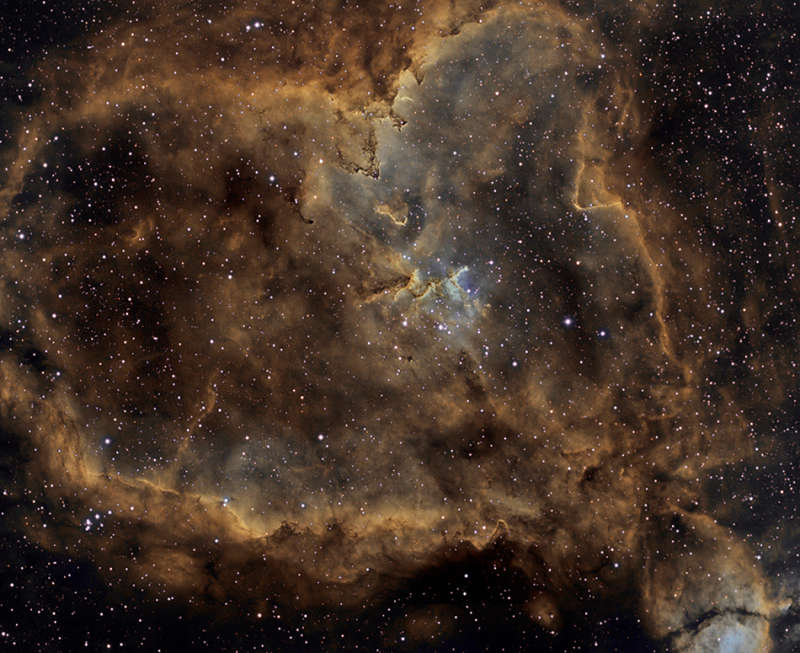Credit & Copyright: César Blanco
González
Explanation:
Sprawling across almost 200 light-years,
emission
nebula IC 1805
is a mix of glowing interstellar gas and dark dust clouds
about 7,500 light-years away in the Perseus
spiral arm of our galaxy.
Stars were born in this region
whose nickname, the Heart Nebula, derives from its
Valentine's-Day-appropriate shape.
The clouds themselves are shaped by stellar winds and radiation from
massive hot stars in the nebula's newborn star cluster
Melotte 15 about 1.5 million years young.
This
deep telescopic image
maps the pervasive light of narrow
emission lines
from atoms in the nebula to a color
palette made popular
in Hubble images of star forming regions.
The field of view spans about two degrees
on the sky or four times the diameter of a full moon.
The cosmic heart is found in the constellation of
Cassiopeia, the boastful
mythical Queen of
Aethiopia .
1999 2000 2001 2002 2003 2004 2005 2006 2007 2008 2009 2010 2011 2012 2013 2014 2015 2016 2017 2018 2019 2020 2021 2022 2023 2024 2025 |
Yanvar' Fevral' Mart Aprel' Mai Iyun' Iyul' Avgust Sentyabr' Oktyabr' Noyabr' Dekabr' |
NASA Web Site Statements, Warnings, and Disclaimers
NASA Official: Jay Norris. Specific rights apply.
A service of: LHEA at NASA / GSFC
& Michigan Tech. U.
|
Publikacii s klyuchevymi slovami:
emission nebula - star formation - Tumannosti mezhzvezdnye - emissionnaya tumannost'
Publikacii so slovami: emission nebula - star formation - Tumannosti mezhzvezdnye - emissionnaya tumannost' | |
Sm. takzhe:
Vse publikacii na tu zhe temu >> | |
